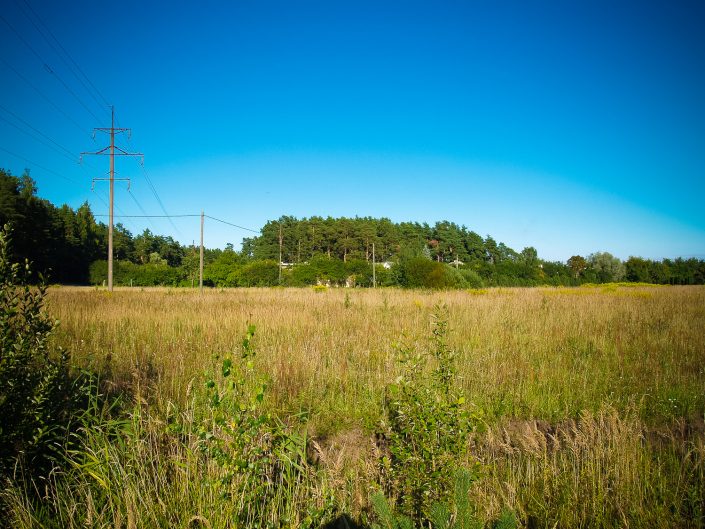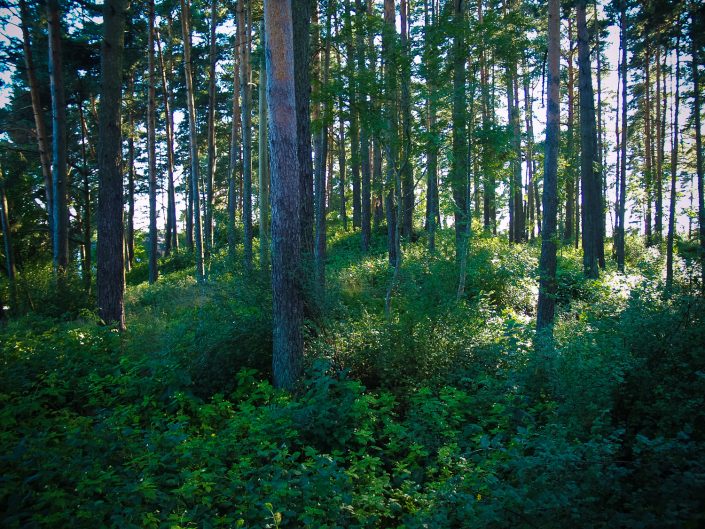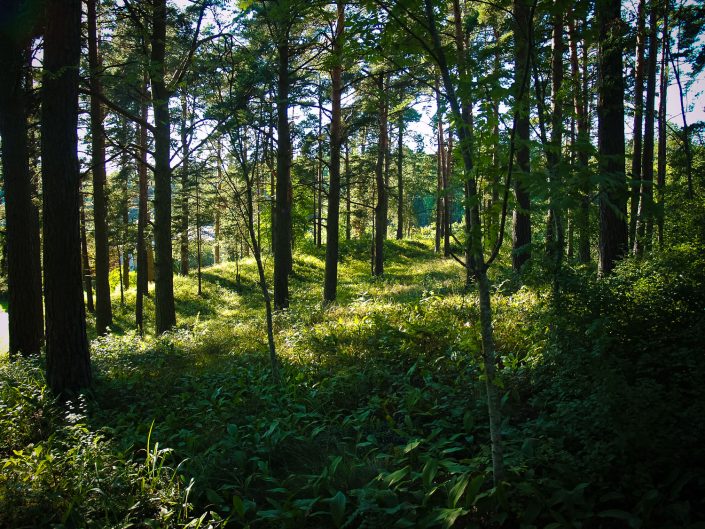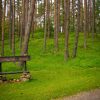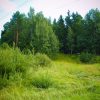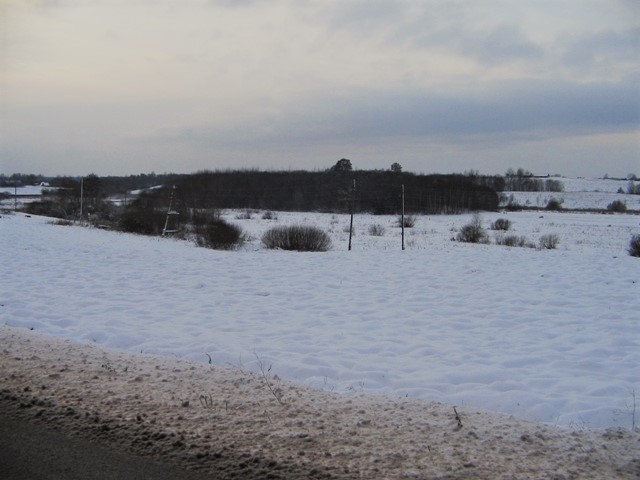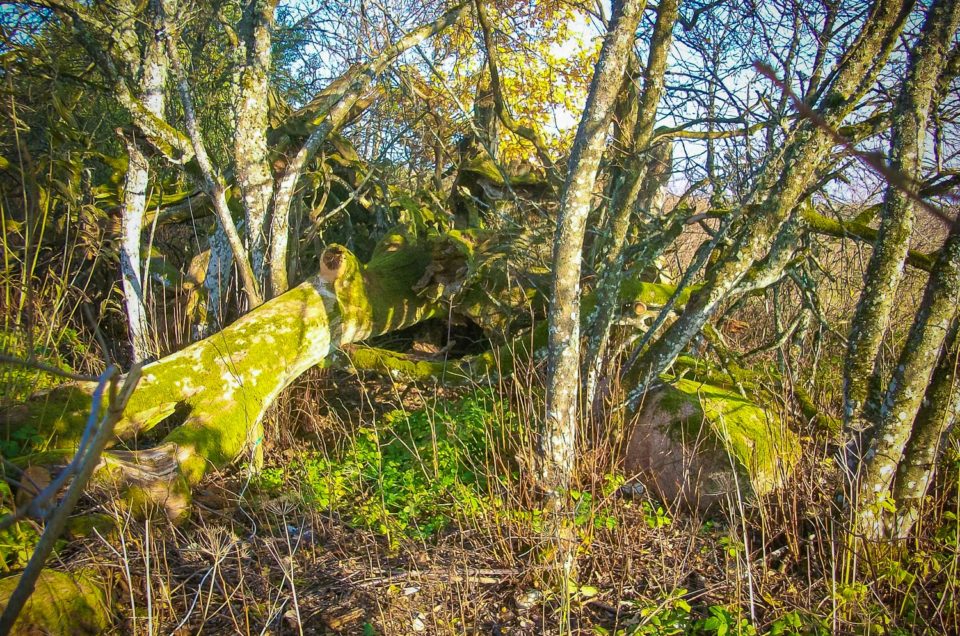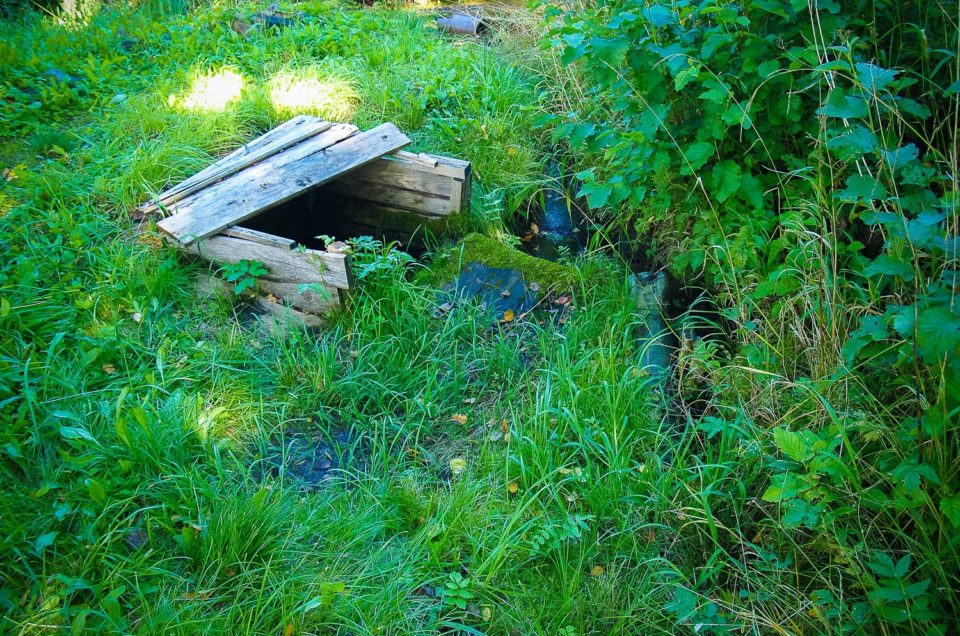The Church Hill is an elevation which is well seen from large vicinity in the flat lowland outlined by the sea, Babite Lake and the Lielupe River. The average diameter of the polygonal irregular sand hill exceeds 100 m. The highest are the E and W slopes, the other two slopes are more gentle. Over time various holes have appeared in the hill, for example, excavations of World War I and II, which have now been partly levelled; as a result the surface of the hill is uneven. The uneven surface could as well be of natural origin as well as appeared during later excavations. Legends and excerpts of legends have been recorded about the hill, the key motif of them being the story about the church which sank into the hill. According to other legends on the hill the God was worshipped in the open air; before the World War I the hill had featured the stumps of the ancient trees considered sacred.At the Church Hill there is an old homestead with a mythical name Pērkoni (The Thunders). Several legends report on the origin of the nearby Babīte Lake, the castle which sank there etc. The legends about the Babīte Lake mention the old lady Baba who sacrificed only the old and ill cattle to the God therefore the God sent a thunderstorm on her which drowned her. Close to the Church Hill at Strēlnieki homestead there is Babīte Hillfort – it might have been the site of the Babīte wooden castle built by the Archbishop of Riga, there also are other archeologically significant sites. The Church Hill does not feature any transformations on its surface which could indicate the sacred character of the site. The hill is covered by trees with underbrush. Currently the Church Hill is from all sides surrounded by buildings.
“[…] valuable information about the hill was provided by the old landlord of Strēlnieki homestead. Like the hillfort, the place since long has been called Church Hill. In earlier times a church stood on the hill which sank. Still before the war on the steep slope there were old big linden trees which grew on the SE slope. Stumps had remained there for long after. These had been the sacred trees. […] The legend says that in this hill a church sunk in ancient times. […]” After-war report by A. Gusars, no date provided; stored in the archive of the Department of Archaeology of the National history Museum of Latvia.”
All around the Church Hill there are private residential buildings and there are no directions about the hill as a culture monument either at the hill, or on the side of the nearby Rīga – Sloka highway. Along the foot of the hill various household buildings cut into the hill; in another place a fence has been built along the foot of the hill to separate the private property from the hill. To a small extent the Church Hill is also used as an illegal dump. At the moment of inspection smelling animal bones were dumped there. The Church Hill can be climbed from various sides, however, one should know the location and limitations imposed by the private cottages and their fences.
Extra materials:
Contains information from the project:

Added by
www.latvijas-pilskalni.lv, www.senvietas.lv un hillforts.eu izveidotājs un uzturētājs.
